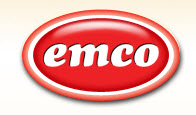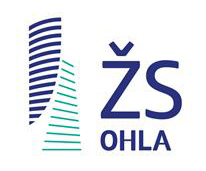GENERAL TERMS AND CONDITIONS
KONICA MINOLTA IT SOLUTIONS CZECH S.R.O.
These Terms and Conditions are part of the Contract between the Customer and Konica Minolta IT Solutions Czech s.r.o. as the Contractor. The Customer and the Contractor may be referred to collectively as the “Parties” or individually as a “Party”. By entering into the Contract, the Customer confirms that it has read the Terms and Conditions, has become familiar with their contents, understands them and agrees to them.
-
DEFINITION AND INTERPRETATION OF TERMS
1.1 Terms used in the Terms have the meanings defined in the following table.
| Acceptance | It is the method of acceptance of the subject of performance defined by the general terms and conditions of the Contractor. |
| Acceptance criteria | Is a list of requirements (or test tasks) agreed in writing between the Client and the Contractor for acceptance purposes. If the subject matter meets these acceptance criteria, the work shall be deemed to be complete. The acceptance criteria shall be proposed by the Client and approved by the Contractor as an integral part of the specification of the subject matter of the Contract. |
| Analysis and Design | It is a document that specifies the subject of performance in detail. It is a detailed description of the design of the solution of the subject of performance, together with all the information necessary for the correct functionality of the subject of performance in the Customer’s environment. |
| Application software (APV) or software |
Is software work, the delivery and implementation of which is subject to these Terms. The Software and its version are specified in the Contract. APV (SW) is delivered and implemented at the Customer’s request in one of the following versions:
|
| Price | It is the total price for the delivery and implementation of the software. |
| Helpdesk | It is the Contractor’s service to receive and record all requests for warranty repairs and support services. |
| Protected information | They are trade secrets within the meaning of Act No. 89/2012 Coll., the Civil Code, as amended, and other confidential information as defined in Article 7 of these Terms and Conditions. |
| Error | There is an uncaused discrepancy on the part of the Contractor between the actual functional characteristics of the performance provided and the functional characteristics set out in the performance documentation or specification. |
| License | Is the authorization to use the Software to the extent defined in the Manufacturers’ License Terms and these Terms. |
| Manufacturer’s Licensing Terms | There are terms and conditions from the manufacturer of the software or part of the software that specify the scope of use of that part. |
| Maintenance (BREP) | It is a regular annual update of Microsoft or Contractor’s software products and the following rules apply:
|
| Offer | It is the Contractor’s proposal for the conclusion of the Contract. |
| Customer | A person who has entered into a Contract with the Contractor for the delivery and implementation of a software work. |
| Personal data of the Customer | They are personal data processed by the Contractor on behalf of the Client when providing Processing Services to the Client. |
| Circumstance excluding liability | It is an obstacle which has arisen independently of the will of the obliged party and prevents it from fulfilling its obligation, if it cannot reasonably be assumed that the obliged party would have averted or overcome the obstacle or its consequences and, furthermore, that it would have foreseen the obstacle at the time of its occurrence. Liability is not excluded by an obstacle that arose only at a time when the obliged party was in default of its obligation or arose from its economic circumstances. The effects precluding liability shall be limited to the duration of the obstacle to which they relate. |
| Written form / in writing | The delivery of an electronic message with a simple electronic signature to an e-mail box, or the delivery of a message via another electronic communication channel, to the addresses that the Parties have mutually communicated in the Contract or in pre-contractual communication, shall also be deemed to be the communication of information in written form (in writing). |
| Terms and Conditions | These are the Terms and Conditions of Konica Minolta IT Solutions Czech s.r.o. for the delivery and implementation of the software work. |
| Project | It is a group of time-limited activities leading to the fulfilment of the subject of the Contract. |
| Project Steering Committee | It is the supreme governing body of the project, whose main duty is to carry out the change procedure in case of an initiative, to confirm the acceptance of performance (acceptance) and to supervise the implementation of the Contract. |
| Contract | It is the Contract for the Work concluded between the Contractor and the Client. |
| Specifications | It is a description of the subject of performance in such detail that in the subsequent procedure for the fulfilment of the subject of the Contract there can be no doubt whether or not this performance has taken place (it consists mostly of the Analysis and the Proposal and Acceptance Criteria). |
| Directed by | There is a culpable discrepancy on the part of the Contractor between the actual functional characteristics of the performance provided and the functional characteristics set out in the performance documentation or specification. |
| Vad category |
A material defect (Category A) is a defect causing problems that make it impossible to use the performance/parts of the performance; i.e., causing the IS to “freeze”, “crash” or become non-functional during normal use or causing loss or corruption of data during normal use of the IS, causing important functions of the IS that are important to the Customer to be non-functional and there is no procedure for alternative resolution of the problem, and the defect cannot be corrected using normal procedures within the competence of the Customer’s system administrator. An operational limiting defect (Category B) is a defect causing operational problems that restrict the use of the performance/parts of the performance; i.e. it causes significant problems in use but is overcome by a temporary replacement procedure or causes part of the delivered performance/parts of the performance to deviate significantly from the specification in the documentation/schedule but does not significantly limit its functionality. A defect not limiting operation (category C) is a defect causing operational problems that complicate the procedures for working with the performance/parts of the performance, i.e. there is a mismatch between the controls or outputs and the behaviour described in the documentation/checklist, or not listed in the previous categories. This defect does not affect the functionality of the performance/participation nor does it affect the correctness of the data processed. These defects consist of grammatically incorrect display of data and accompanying texts (typos, diacritics, etc.) and are also defects that can be temporarily resolved by changing the procedure for using the performance/participation without significant loss of user time compared to the fault-free state. |
| Larger amount of Vad | One (1) or more Category A Vadas, or four (4) or more Category B Vadas, or thirty (30) or more Category C Vadas for each process area. |
| Project Manager | Is the person authorised by the Parties to ensure the Party’s obligations under the Contract for that Party. |
| Project charter | It is a document that precisely describes the organisational, communication and material conditions of the project. |
| Warranty period | Is the period specified in the contract during which the Contractor undertakes to remedy defects free of charge |
| Contractor | It is the company Konica Minolta IT Solutions Czech s.r.o., with registered office at U Plynárny 1002/97, Michle, 101 00 Prague 10, ID No.: 25820826, registered in the Commercial Register under No. C 347149 at the Municipal Court in Prague. |
| Change procedure | It is to discuss and approve changes to the price, terms and material content of the project based on a request from one of the parties. |
| Processing services | The personal data processing services provided by the Contractor to the Client on the basis of the Contract and any related technical support insofar as it involves the processing of personal data. |
2. THE CREATION OF A CONTRACTUAL RELATIONSHIP
- The contractual relationship between the Contractor and the Client is established upon the signing of the contract by both parties.
- The contractual relationship is also established by written confirmation of the Customer’s order to the Contractor.
3. THE SUBJECT OF THE CONTRACTUAL RELATIONSHIP
- The subject matter is the supply of products, the performance of services and/or the execution of works.
- Products mean in particular:
- Use rights to software parts that are not manufactured by Konica Minolta IT Solutions Czech s.r.o;
- Use rights to software parts produced by Konica Minolta IT Solutions Czech s.r.o;
- Providing usage rights to higher versions of software works;
- Technological equipment, hardware;
- Consumables.
3. Services means in particular
- System integration;
- Consultancy work;
- Software work;
- Conceptual proposals;
- Support services;
- Outsourcing services.
4. Services and products can together form a work. If the object of performance is considered a work, this must be expressly stated in the Contract.
5. The specific nature of the object of the contractual relationship is clearly determined by the relevant contract.
6. Unless otherwise stipulated in the relevant contract, the place of performance shall be understood as the customer’s registered office.
4. PRICE AND PAYMENT TERMS
- Prices for products, services and/or work must be explicitly stated in any relevant contract or confirmed order
- Any price quoted by the Contractor in the Contract, the Tender, online or in any communication does not include value-added tax unless the amount is expressly stated otherwise. Value-added tax shall be invoiced by the Contractor together with the Price in accordance with the relevant legislation.
- The price and payment terms are agreed in the Contract. The price consists of:
- Price for delivery and implementation of SW
- Price for Software License
- Price for Maintenance for the 1st year, if specified
- Price for other items specified in the Contract
- All invoices will be tax invoices in accordance with the relevant legislation. The due date of the invoice is defined in the Contract. The Client agrees that the Contractor shall send invoices to the Client in electronic form to the Client’s e-mail address specified in the Contract or otherwise marked for sending invoices.
- The Customer shall pay the price in the manner specified in the invoice. The Customer is obliged to indicate the variable symbol indicated on the invoice when paying the Price. The Client’s obligation to pay the Price is fulfilled when the relevant amount is credited to the Contractor’s account.
- The Contractor has the right to stop work on the subject of the Contract if the Client is in default of payment of the Price for reasons on the Client’s side. The time limit for the performance of the subject of the Contract agreed in the Contract shall be extended by the period during which the Client has been in default in the payment of the invoice due.
- The prices for performance agreed in the contracts do not include the cost of providing the premises and equipment for the training. These reasonable costs will be invoiced separately on the basis of approved statements by the project managers. The indicative amount of these costs must be agreed in advance and agreed in writing by the customer at the project management level.
5. EXECUTION OF THE WORK AND SYNERGY
- The Contractor shall deliver and implement the software properly and on time, within the timeframe agreed in the Contract. The Contractor is entitled to perform the subject of the Contract through third parties.
- The Client undertakes to provide the Contractor with maximum cooperation to enable the Contractor to properly perform the Contract, in particular:
- Allow access to the Client’s hardware and/or software infrastructure, including remote access chosen by the Contractor;
- Purchase and provide access to a cloud-based AUV environment;
- Provide the Contractor with timely, complete and truthful information necessary for the performance of the subject of the Contract;
- Immediately inform the Contractor of all facts that may affect the performance of the Contract;
- Ensure the necessary participation and cooperation of the Customer’s employees who have sufficient operational, technical and other professional knowledge of the Customer in the performance of the Contract.
- In the case of the on-premise version of the software, prepare the Customer’s environment for the proper execution of the work.
- Perform SW Acceptance.
- If the Client fails to provide sufficient cooperation according to the Contract, the Contractor shall notify the Client in writing. If the failure to provide such cooperation prevents the Contractor from performing the Contract, then all time limits for the performance of the Contractor’s obligations under the Contract shall be extended by the period of delay in providing the required cooperation to the Contractor.
- If the object of performance is the delivery of a product or service, the handover and acceptance takes place in one step by the customer confirming the acceptance of the product/service in writing on the handover report.
- If the object of performance is a work, the manner in which the Contractor shall hand over the work after completion is determined; the acceptance by the Client takes place in two steps.
- The first step is the handover of the work to the Client when the Contractor enters the subject of handover in the handover protocol and the Client is obliged to confirm the handover by signing the handover protocol. On the day of handover, the deadline for the Client to express acceptance reservations begins. This period shall be ten (10) working days. The handover of the work/parts of the work/output shall take place by signing the relevant Handover Protocol by the Contractor’s and the Client’s Project Managers.
- Acceptance of the work/parts of the work/output is done by signing the respective Acceptance Protocol by the authorized personnel of the Contractor and the Client listed in the respective Contract or Project Charter.
- If the Work/Part of the Work/Output meets the pre-agreed conditions (acceptance criteria), the Customer undertakes to accept the Work/Part of the Work/Output immediately within ten (10) working days and to confirm the Acceptance by signing the Acceptance Protocol.
- If the performance/parts of the performance are defective, it is accepted with reservation and the date of removal is part of the acceptance protocol. The performance deadlines are extended by this agreed period and the Contractor is not in default during this period. If the defects are not remedied within the agreed time limit, the Contractor shall be in default from the original delivery date (unless otherwise stipulated in the contract) until the defects have been remedied.
- If the delivered performance/parts of performance show a large number of defects, the acceptance procedure is terminated with an unsuccessful result and the performance/parts of performance are returned to the Contractor for completion. The acceptance procedure shall be repeated and until its successful completion, the Contractor shall be in default from the time of the originally agreed performance date.
- In the event that the Client does not accept the work and at the same time does not submit his/her objections in writing within the relevant period of ten (10) days, the work/part of the work/output shall be deemed to have been duly handed over and accepted on the date specified in the handover report extended by ten (10) days.
- If the Customer uses the delivered work or a part thereof for the purposes for which the work/part of the work/output was made, the work/part of the work/output shall be deemed to have been accepted and Accepted.
- In the absence of a Service Contract, the Contractor undertakes to accept the Client’s requests for defect reports or requests for additional services sent in writing to the Contractor for a period of 12 months from the handover of the work. The Contractor does not guarantee any capacity reservation to deal with service requests so sent and is therefore not obliged to respond within a specific time period and may reject requests for additional services without further delay.
- For on-premise and Cloud SW, the Customer is not entitled to use the SW until the Price is paid in full, except for the purpose of testing whether the SW is complete. The Contractor reserves the right to technically restrict the functionality of the on-premise SW and Cloud SW until the Price has been paid in full so that the Customer can only use it for testing purposes (e.g. by limiting functions, etc.).
6. COPYRIGHT AND LICENSING TERMS
- The Contractor’s Intellectual Property shall form part of the performance of the Contract, whereby any work of authorship and industrial intellectual property such as trademarks, utility and industrial designs or patents shall be deemed to be Intellectual Property.
- Upon payment of the Price to the Contractor, the Contractor shall provide the Client on its behalf with a non-exclusive, territorially unlimited License to use the software, the name and version of which is specified in the Contract. The Contractor advises the Client that the Licence is limited by the Licence Conditions depending on the software supplied. The Customer is obliged to familiarize itself with these Licence Conditions at its own risk.
- Licensing terms for Microsoft software: https://www.microsoft.com/cs-cz/useterms
- Licensing terms for Microsoft software: https://www.microsoft.com/cs-cz/useterms
- The license is granted for the purpose of using the software for the Customer’s own needs in its operation, without the possibility of its use by third parties or its distribution to other entities.
- The license is limited in scope depending on the version or specification of the software: e.g. number of users or data volume, etc., if explicitly stated in the Agreement. If the limitation of the Licence is not stated in the Agreement, the Licence shall not be deemed to be limited in any way other than as stated in these Terms or in the Manufacturer’s Licence Terms.
- The Customer is not entitled to modify, combine with other works, reproduce, make available or disclose to the public or decompile any part of the SW, unless otherwise expressly stated in the Licence Conditions of the manufacturer.
- The Contractor warns the Customer that it may unilaterally change the licence conditions.
- In the event that the Customer uses the Work in violation of the provisions of Article6 .2 or 6.3, Konica Minolta IT Solutions Czech s.r.o. shall be entitled to notify the Customer in writing and to give the Customer a period of fourteen (14) days to remedy the situation. If the Customer’s breach of contract or right continues, Konica Minolta IT Solutions Czech s.r.o. shall be entitled to withdraw the Work or prevent its use.
7. OBLIGATION OF CONFIDENTIALITY
- Each Party shall maintain the confidentiality of all Protected Information of the other Party, as well as any security measures the disclosure of which would compromise the security of the other Party’s Protected Information. Compliance with the obligation of confidentiality means, in particular, not to disclose or make available the other Party’s Protected Information to any third party and not to use it for purposes other than those necessary for the performance of the Party’s obligations to the other Party under the Agreement.
- In addition to the Party’s trade secrets, the Party’s Protected Information includes the following confidential information of the Party:
- Non-public information contained in any contract to which a Party is a party;
- Non-public information about the Party’s employees, customers or business partners;
- Non-public technical and manufacturing data, internal regulations, computer programs, source and machine codes of computer programs, data files, know-how, analyses, algorithms, development or manufacturing processes, inventions and discoveries of the Party;
- Non-public data on the Party’s financial and economic situation, plans for further development, innovations and marketing plans, advertising ideas and proposals, documentation of working procedures used, security codes and passwords, accounting documents and business books;
- The above information of the Party’s business partners;
- Information that a Party designates in writing as confidential by the words “CONFIDENTIAL”, “CONFIDENTIAL”, “SECRET”, or other words of similar meaning;
- Any other non-public information of a Party which, by reason of its content or the manner or form in which it is communicated to the other Party, would or should be considered confidential by the other Party;
- Information on the existence of the above information.
- Protected information is not information that is available to the public at the time of disclosure or use.
- It shall not be a breach of a Party’s obligation under this Article for a Party to disclose or use Protected Information of the other Party:
- With the prior written consent of the other Party;
- Which was known to the Party from sources other than the other Party and which was not obtained by the Party through a breach of a confidentiality obligation;
- Because of an obligation imposed on the Party by law or by a public authority; or
- For the reason that it is necessary for the performance of the Party’s obligations to the other Party in the performance of the Contract.
- Further, it is not a breach of confidentiality to disclose Protected Information of the other Party to the Party’s auditor, consultant, expert or other consultants, provided that such third party has been advised of the Party’s confidentiality obligations under the Agreement and has agreed to comply with equally or more stringent rules.
- Even for disclosures or uses of Protected Information pursuant to paragraph 7.4, a Party is entitled to do so only to the minimum extent necessary. Each Party agrees to promptly notify the other Party in writing of all instances in which it has disclosed the other Party’s Protected Information to a third party pursuant to paragraph 7.4(c), unless precluded by law.
8. PROCESSING ARRANGEMENTS
- The processing of the Customer’s Personal Data is governed by the Personal Data Processing Terms and Conditions available at https://www.konicaminoltaits.cz/en/addendum-dpa-customer/ (the “Addendum”).
9. WARRANTY AND LIABILITY FOR DEFECTS
- By providing a guarantee for the object of performance, the contractor undertakes that it will meet the specifications specified in the user documentation for the specified guarantee period. The description of the characteristics of the output in the Contract shall replace the non-existing documentation. The warranty period for the output of the activities provided shall be six (6) months from the delivery of the output.
- The warranty period begins upon acceptance of the performance. If the object of performance is composed of several parts (for example, several Stages), then the warranty period of each individual part of the object of performance starts from the moment of its acceptance and applies to defects arising during the warranty period.
- The Customer sends requests for warranty repairs in writing via the Contractor’s Helpdesk. Notification of defects must be made no later than the last working day of the warranty period.
- Work to rectify the notified defect covered by the guarantee must be started without undue delay. If it is not possible to remedy such defect immediately, the Contractor must notify the Client without undue delay of the expected date and method of remedying the defect.
- The contractor is also entitled to remedy the defect by proposing an alternative procedure that avoids the manifestation of the defect in normal operation and does not affect the result of the use of the work or significantly restrict its use.
- In the event that the Client requests the repair of a defect not covered by the warranty, the Contractor and the Client shall agree on the terms of its performance. It is the Contractor’s obligation to inform the Client in advance that the service requested by him is not covered by the guarantee and will be charged according to the current prices of the respective service.
- The Contractor’s costs for activities associated with the analysis of the Client’s requirements not covered by the warranty shall be borne by the Client.
- The Customer acknowledges that the software in the on-premise version cannot be faultless in the long term without updates that respond to developments in the field of information technology. The Provider shall not be liable for non-functionality or limitations of the SW functionalities caused by changes in the field of information technology (e.g. changes or upgrades of operating systems, firmware, or in case of changes in the Customer’s operating environment).
- By signing the acceptance protocol “without reservations”, the Customer confirms the faultlessness of the software.
- The contractor is not liable for defects arising from:
- operating the software in contravention of the supplied user documentation;
- unauthorised or unprofessional intervention or improper use of the output by the Customer or a third party without the Contractor’s prior written consent;
- modification or any other intervention in the delivered Information System by a third party who is not entitled to such intervention by written consent of the Contractor;
- modifying the SW in violation of the terms of the Contract or the law, using the SW in an operating and/or database environment other than that supported by the Contractor, or using the SW in a manner inconsistent with the current version supported by the Contractor, all without the Contractor’s prior written consent;
- intervention of the Customer into data structures outside the respective SW;
- unauthorized intervention of the Customer into data outside the relevant SW;
- by installing other software that interacts with software supplied by the Contractor without the Contractor’s consent;
- by changing the parameters of the Customer’s system environment in which the delivered software is operated, without the Contractor’s consent;
- components of the Customer’s system that are not covered by this warranty and the Customer has been advised of this interaction by the Contractor;
- due to computer viruses;
- neglect of prescribed maintenance by the Customer.
11. The Customer is solely responsible for the creation, use and operation of the data in the system. The Customer is also obliged to perform security backups of the data in accordance with the rules common for handling data in information systems. The Contractor shall not be liable for any loss or damage to the Customer’s data or data structures, even if this occurs during the use of the performance delivered by the Contractor m covered by the guarantee.
10. LIABILITY FOR DAMAGES AND PENALTIES
- In the event of the Client’s delay in paying any amount rightfully billed to the Contractor, the Client undertakes to pay the Contractor a contractual penalty of 0.05% of the amount due for each day of delay.
- In the event of a breach of the Client’s obligation referred to in paragraph 5.7, the Client undertakes to pay the Contractor a contractual penalty in the amount of the price for the Licences.
- Contractual penalties are payable on the 14th day from the date of their application by notice to the breaching Party.
- Payment of any liquidated damages shall not affect the right and entitlement of either Party to full compensation.
- The Contractor shall not be liable for any damage arising as a direct or indirect consequence of the performance of the Contract.
- The Contractor declares that the SW is general purpose and has only the features specified in the Technical Documentation.
- If, despite the limitation set out in this clause, the Contractor is required to indemnify the Client for any loss, the Parties agree that the
- Contractor shall indemnify the Client up to a maximum of the Price paid to the Contractor.
11. DURATION AND TERMINATION OF THE CONTRACT
- The Contract is concluded for the period specified in the Contract.
- The Contract may be terminated by written agreement of the Parties or by withdrawal from the Contract. In addition, for SaaS software, the Contract may be terminated by notice. The notice period is 2 months and starts on the first day of the month following the delivery of the notice to the other party.
- The Contractor has the right to withdraw from the Contract:
- for a material breach of the Contract by the Customer, which shall be deemed to be in particular:
- The Customer breaches the obligation of confidentiality;
- The Client will not respond promptly twice in succession to the Contractor’s request for assistance within the meaning of paragraph 5.2;
- for a material breach of the Contract by the Customer, which shall be deemed to be in particular:
- The Customer has breached the terms of the Licence
- The Customer has the right to withdraw from the Contract if the Contractor fails to meet the agreed deadline for delivery and implementation of the software for reasons solely attributable to the Contractor, even after being requested to perform within an additional period of one (1) month.
- Withdrawal from the Contract requires a written form. Withdrawal from the Contract is effective on the date of its delivery to the other Party.
- In case of withdrawal from the Contract by the Contractor, the Client is obliged to reimburse the Contractor for the pro rata part of the Price for the work already performed by the Contractor, including the price for the Licences, if any.
- In the event of withdrawal from the Contract by the Client, the Contractor undertakes to return the Price or part of the Price paid by the Client to the Client, with the exception of payments for SaaS software services used.
- The rights and obligations agreed in Articles 7, 8, 9, 10, 11 and 12 shall survive the termination of the Contract. The obligation of confidentiality shall continue for the lifetime of the Protected Information or until the Parties mutually waive this obligation in writing.
12. FINAL PROVISIONS
- The Parties exclude the application of any commercial practices within the meaning of Section 558(2) of Act No. 89/2012 Coll., the Civil Code, as amended, except those expressly agreed in the Contract.
- A third party is any person other than the Contractor and the Client. The Parties declare that by entering into the Contract they do not intend that the Contract shall give rise to any rights or obligations of any third party.
- The Contract and these Terms supersede any prior oral or written agreements between the Parties relating to the subject matter of the Contract.
- The invalidity, ineffectiveness, illegality or unenforceability of any part of the Contract shall not affect the remaining parts of the Contract. The Parties undertake to replace any invalid, ineffective, apparent or unenforceable part of the Contract with a valid, effective, non-apparent and enforceable part of equal commercial and legal significance within 14 (fourteen) days of receipt of a written request from the other Party.
- The headings of the articles in the Agreement and these Terms are for convenience of reference and shall not be used to interpret the articles. All terms used in the singular in these Conditions may be construed in the plural if the context so requires and vice versa.
- The Customer is not entitled to assign the Contract or any claim, right or demand
arising therefrom, without the prior written consent of the Contractor. - The Client is not entitled to set off against the Contractor any claim, right or demand arising from the Contract without the Contractor’s prior written consent.
- Upon termination of the Customer, the rights and obligations of the Customer under the Contract shall pass to its legal successor.
- The Parties consider as a case of force majeure all circumstances independent of the will of the obliged Party which are irremovable and unforeseeable, in particular natural disasters, embargoes, strikes (including planned ones) and wars. If a Party suffers a Force Majeure Event which prevents it from performing its obligations under the Conditions, it shall without undue delay notify the other Party in writing, specifying the period of time for which it will be unable to perform the Contract. Force Majeure Events shall not affect the payment obligations of either Party.
- All communication between the Parties shall be carried out mainly by e-mail to the addresses communicated by the Parties to each other in the Contract or in pre-contractual communication, in the Czech language.
- Legal relations between the Parties related to the Contract shall be governed by Czech law.
- All disputes arising out of and in connection with the Contract shall be finally decided by the Court of Arbitration of the Czech Chamber of Commerce and the Czech Chamber of Agriculture according to its rules by three arbitrators.
- The failure or omission of either Party to enforce any of its rights under the Contract shall not be deemed a waiver of such rights in the future and shall not constitute an established practice between the Parties.
- In the event of any conflict between these Terms and Conditions, the Agreement and/or the Schedules hereto, the following documents shall prevail from the lowest number:
- Contract;
- Conditions.
- These Terms are effective from 1. 3. 2022.



















